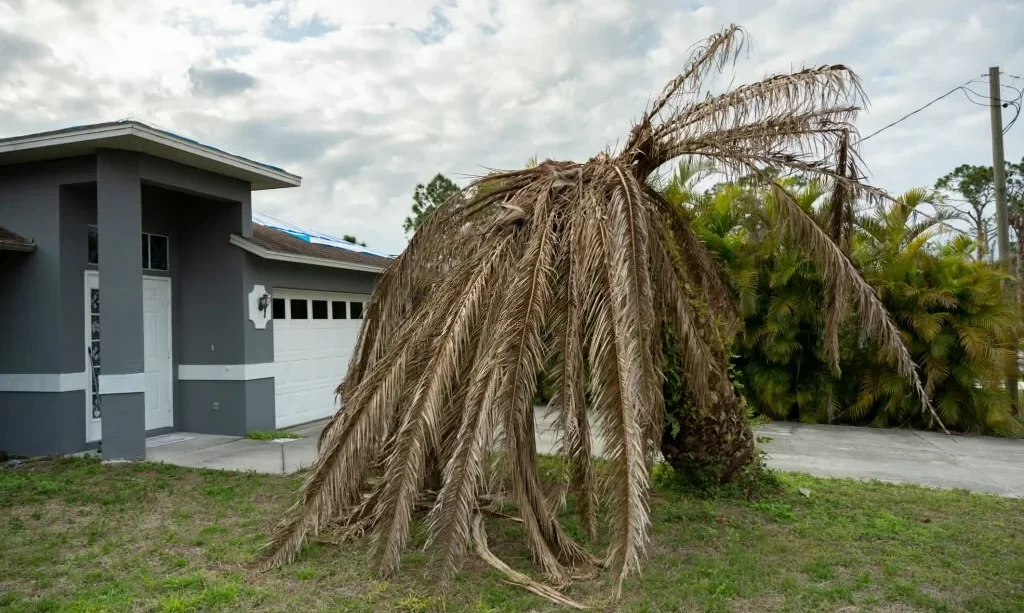The need to remove a palm tree can arise for various reasons, from disease and damage to landscape changes. Whether you’re a homeowner or a landscaper, understanding how to remove a palm tree safely and effectively is essential. In this guide, we’ll take you through the process step by step, emphasizing the importance of responsible tree removal practices. By following these guidelines, you can ensure that the palm tree removal is carried out with care and precision, minimizing risks and potential damage to surrounding structures or vegetation.
Assessing the Situation
Before you begin the process of removing a palm tree, it’s crucial to assess the situation comprehensively. This assessment includes:
- Location and Surroundings: Consider the location of the palm tree and its proximity to structures, power lines, and other trees. Assess the space available for the tree’s safe removal.
- Tree’s Condition: Examine the palm tree’s condition. Is it healthy, diseased, or damaged? A diseased or unstable palm tree may require a different removal approach than a healthy one.
- Size of the Tree: Determine the size of the palm tree, as this will influence the complexity of the removal process. Larger trees may require more advanced techniques.
- Permits and Regulations: Check local regulations and permit requirements for tree removal. Some areas may have specific rules governing the removal of palm trees.
Gather the Necessary Tools and Equipment
To remove a palm tree safely and effectively, you’ll need a set of tools and equipment. These may include:
- Safety Gear: Prioritize your safety by wearing appropriate gear, including gloves, goggles, and a hard hat. These items protect you from potential hazards during the removal process.
- Chainsaw: A chainsaw is essential for cutting through the palm tree’s trunk and branches. Ensure it is sharp and in good working condition.
- Pruning Tools: Pruning shears or loppers are needed for trimming fronds and smaller branches.
- Ropes and Rigging Equipment: These tools are crucial for controlling the direction of the tree’s fall and ensuring safety during the removal.
- Ladder or Climbing Equipment: Depending on the height of the palm tree, you may need a ladder or climbing gear to access higher branches and the tree’s canopy.
- Stump Removal Equipment: If you plan to remove the stump, gather tools like a stump grinder or digging equipment. The choice of tool depends on the stump’s size and your preferred method of removal.
Having the right tools and equipment is a fundamental step in the safe and efficient removal of a palm tree. With these items in place and a clear assessment of the situation, you’re ready to proceed with the removal process.
Pruning and Trimming
Once you’ve assessed the situation and gathered the necessary tools, the next steps involve pruning and trimming the palm tree:
- Start at the Bottom: Begin by pruning and trimming the palm tree from the bottom and work your way up. Remove the lower fronds and branches first.
- Prune Carefully: Use your pruning shears or loppers to remove fronds, branches, and dead or damaged growth. Take care to avoid cutting into the tree’s main trunk or healthy growth.
- Maintain Balance: Maintain the palm tree’s balance and aesthetics as you prune. Avoid over-pruning, which can stress the tree.
- Caution with Large Fronds: Exercise extra caution when removing larger fronds near the top of the tree. These fronds can be heavy and may require additional support during removal.
Cutting Down the Palm Tree
The process of cutting down the palm tree requires attention to safety and precision:
- Clear Escape Path: Before making your cuts, ensure there is a clear escape path in the direction you intend the tree to fall. Remove any obstacles or obstructions in the way.
- Felling or Directional Cutting: Decide whether you will fell the palm tree or use directional cutting. Directional cutting involves removing specific fronds or branches to guide the tree’s fall in a controlled manner.
- Use Your Chainsaw: With your chainsaw, make the necessary cuts to bring down the palm tree. Ensure that the cuts are level and straight to control the tree’s direction.
- Retreat Safely: After making the cuts, move quickly to your pre-determined escape path, maintaining a safe distance from the falling tree.
Removing the Stump
Removing the palm tree’s stump is the final phase of the removal process:
- Stump Grinder: If the palm tree’s stump is large and you plan to remove it, a stump grinder is a valuable tool. This machine grinds the stump into wood chips and soil, making the area ready for replanting or landscaping.
- Digging Method: Alternatively, you can opt for the digging method. Use a shovel or other digging equipment to excavate the soil around the stump. Gradually expose the root system, and then cut or remove the roots. This method may be more time-consuming but is effective for smaller stumps.
- Chemical Treatment: Another option is to use chemical treatments to accelerate the stump’s decomposition. These chemicals break down the wood over time. Follow the manufacturer’s instructions and safety guidelines when using chemicals.
- Replant or Landscape: After stump removal, you can choose to replant the area or proceed with your landscaping plans. Remove any remaining debris and level the ground as needed.
By completing these steps, you can safely and effectively remove a palm tree from your property, whether it’s due to disease, damage, or landscaping changes. The key is to prioritize safety, employ the right tools, and follow a systematic approach to ensure a successful palm tree removal.
Cleaning and Disposing of Debris
Once the palm tree has been successfully removed and any stump has been dealt with, it’s time to clean up the area and dispose of the debris responsibly:
- Collect Debris: Gather all the tree debris, including fronds, branches, and wood from the trunk, and place it in a designated area.
- Recycle or Mulch: Consider recycling the debris by taking it to a local recycling facility. Some parts of the palm tree, like the fronds, can be converted into mulch or used for composting.
- Responsible Disposal: If recycling or mulching isn’t an option, ensure responsible disposal. Contact your local waste management or disposal service to arrange for pickup or drop-off at an appropriate facility.
- Prepare for Replanting: If you plan to replant the area, ensure that it’s clear of any palm tree debris and that the ground is level and ready for new plantings.
Ensuring Safety and Compliance
Throughout the palm tree removal process, safety should be a top priority. Additionally, consider any local regulations or permits related to tree removal:
- Safety Always: Prioritize safety at every stage, from pruning and cutting to debris cleanup. Ensure that you and anyone involved in the process wear the necessary safety gear.
- Check Local Regulations: Be aware of and comply with local regulations regarding tree removal. Some areas may require permits for tree removal, especially if the palm tree is located in a protected or conservation area.
- Consider Professional Help: For large or complex palm tree removals, it’s often safer and more efficient to hire professional tree removal services. They have the expertise, equipment, and experience to handle the task effectively while adhering to safety standards.
Conclusion
Removing a palm tree is a task that requires careful planning, the right tools, and a strong commitment to safety. Whether you’re dealing with a diseased tree, making changes to your landscape, or addressing other reasons for removal, following the steps outlined in this guide ensures that the process is conducted safely and effectively.
By assessing the situation, gathering the necessary tools, pruning, cutting, and dealing with the stump, you can successfully remove a palm tree. Don’t forget the importance of cleaning up responsibly and complying with local regulations. Whether you choose to replant or continue with your landscaping project, the successful removal of a palm tree leaves you with a safe and clear space for future endeavors.




